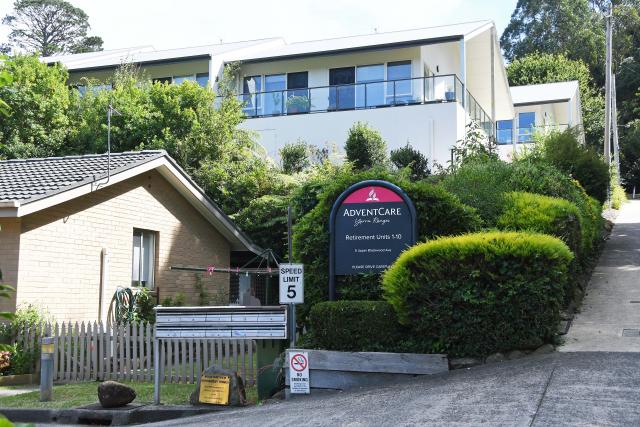Aged care homes in Australia have been required to have a registered nurse (RN) on-site 24 hours a day, seven days a week since July 2023, implemented as a key recommendation from the Royal Commission into Aged Care Quality and Safety.
For some homes, including the AdventCare home in Warburton, this requirement has proved to be impossible to fulfil due to staff shortages, despite their best efforts.
While this is a concern long-term, AdventCare has alternative arrangements in place which they update the Commission on monthly and which have been accepted given their circumstances, but the exemption is set to expire in July this year.
AdventCare CEO David Reece said the facility itself is running very well, but they’d love to have more staff.
“The new funding system suits us, the government is funding it well, but the Royal Commission has found that you get better care if you have a registered nurse on board, preferably 24 hours a day, which 85 per cent of aged care facilities have had for decades,” he said.
“In the smaller facilities and particularly in regional ones like Warburton, there have just not been enough registered nurses in the area, despite the fact we’ve got good clinical support, we’ve got several registered nurses during the day and we’ve got enrolled nurses (ENs) on night and evening shifts.”
RNs have completed a three–year Bachelor of Nursing course, while ENs have completed a two-year Diploma of Nursing. RNs supervise ENs, with both roles including lots of hands-on, practical nursing tasks, while RNs may also be required to perform more complex tasks such as creating patient care plans or assessments for ENs to implement, or to evaluate the outcomes of medication given to patients.
While the Warburton AdventCare home doesn’t have an RN on-site 24/7, there is always an RN who is on call at any time and lives locally, which is considered an effective alternative care arrangement.
Mr Reece said the University of Wollongong was also commissioned to do a study of alternative clinical models of care, which he is confident will validate them.
“The quality commission, who’s the regulator, has a clear understanding of what we are doing and they’re confident that we have an alternate model,” he said.
“We’re still waiting for that report to be released but what is likely is that they might say that where you have a sound clinical alternate model in place, then you get an exemption from having 24-hour registered nurses.”
Also as part of the reforms, residential aged care homes have had to provide each resident with 200 care minutes each day, with at least 40 of those provided by an RN, since October 2023. This is set to be scaled up to 215 minutes, including 44 RN minutes, from October this year.
Mr Reece said this is something he worries they’ll never be able to do at Warburton.
“We’ve got about 45 minutes of enrolled nurses and about 15 minutes of RN, so we’ve got more than the 40 minutes regulated for nursing staff, but in a different combination,” he said.
“The problem is that because they mandate this RN model, the risk is that people in other parts of town have said they have been replacing enrolled nurses with registered nurses. and the danger with that is that once you lose the enrolled nurse, they go and work somewhere else and you can’t get them back.”
To help fill the shortfall of RNs, a number of the ENs at the Warburton AdventCare home have put their hands up to start studying to become RNs. ENs are likely to receive credit towards the Bachelor of Nursing from the units they completed through the Diploma of Nursing which speeds up the process and reduces the extra workload.
AdventCare also received funding in December to help recruit more staff to help meet the total minutes of care mandated.
Mr Reece said more training is always talked up and is something will always encourage, but it doesn’t provide a short-term solution.
“There’s a supplement if you’re a smaller home with under 60 beds and you have 24/7 nursing, you get a supplement, which for Warburton would be another $15,000-16,000 a month, which is very useful money because it’s costing us about three grand to have on-call support from RNs, but if you don’t meet 24/7 you get nothing,” he said.
“If they gave us some of that money and we were able to recruit a whole lot more people, the supplement would help us cover it,”
“If when you get to say 50 per cent coverage, you got half of the money or even if it 75 per cent, there’s some incentive, but the way it is now we are so far off it that we are not going to get there.”
The Department of Health made about 10,000 scholarships of up to $16,500 available for new domestic students between 1 January 2023 and the Semester 1 census date for courses in 2024, to encourage Victorian students to complete an undergraduate (entry-to-practice) nursing or midwifery qualification, such as a Bachelor of Nursing.
Aged Care Quality and Safety Commissioner Janet Anderson said aged care providers are required to comply with their workforce responsibilities.
“The Aged Care Quality and Safety Commission will continue to take a fair and sensible approach to regulating providers’ compliance with these obligations,” she said.
“In any circumstance where we find that residents in an aged care home are at heightened risk of harm, we will not hesitate to take regulatory action to protect the safety and wellbeing of those older people.”
The Department of Health and Aged Care currently forecasts the aged care workforce will be short 5918 RNs by 2024-25 when the increased care requirement comes in, revealed in additional Senate estimates this month.
Ms Anderson said if a provider is falling short of full compliance with their workforce responsibilities, the commission will give priority consideration to whether the non-compliance presents a risk to residents.
“If the risk is assessed as low and the provider has arrangements in place to ensure that its residents’ needs are being met, then we will also consider the efforts they are making to recruit and retain the required staff,” she said.
“Where a provider can demonstrate that they are delivering safe, quality care and also making progress towards meeting their workforce obligations, the Commission will monitor their efforts and is unlikely to take regulatory action,”
“However, if the provider is not able to demonstrate one or both of these requirements, then we will engage with them more closely and are more likely to take regulatory action.”







